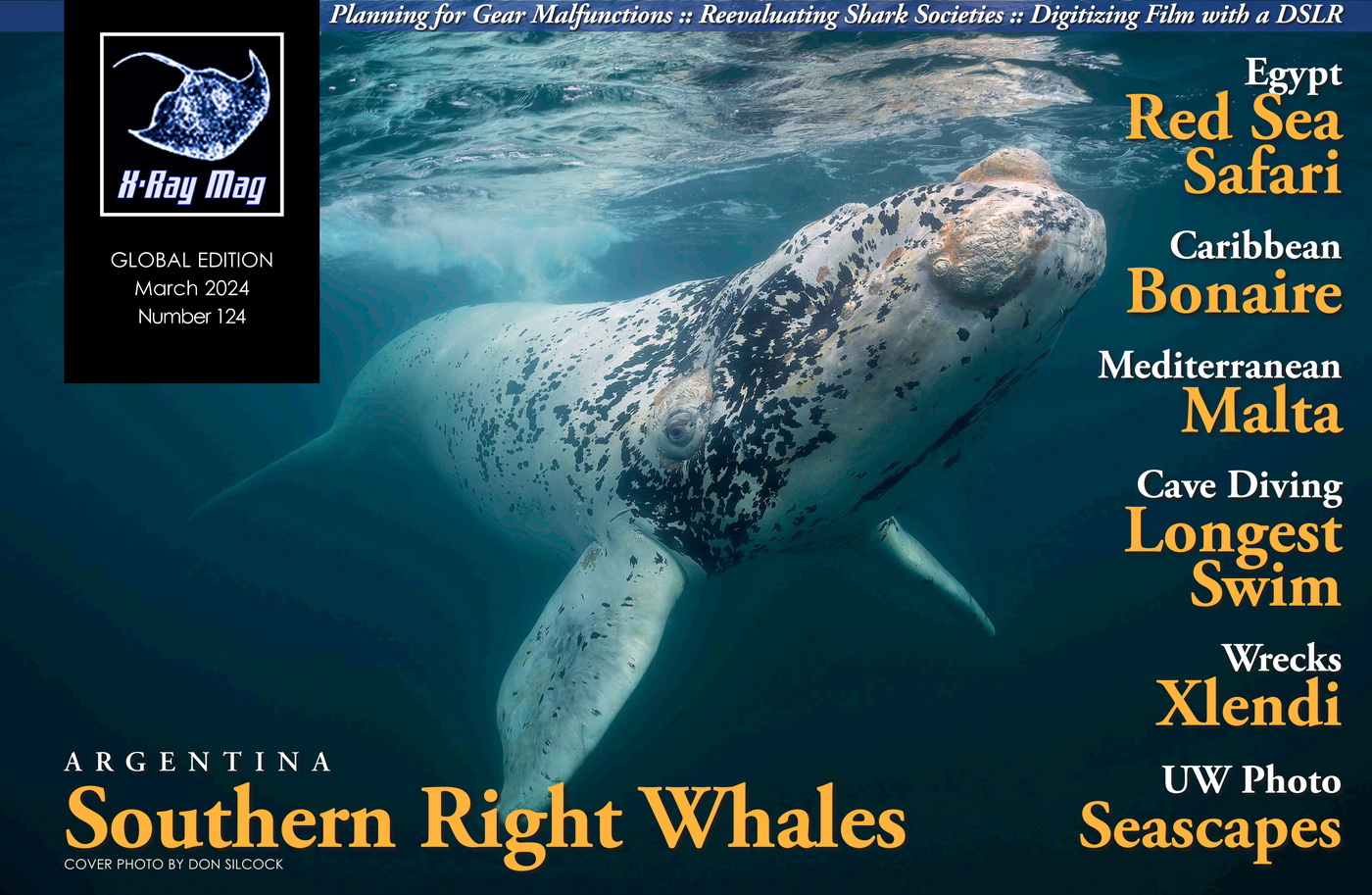Southern Right Whales of Peninsula Valdés – The key lies in how you enter the water… Slip ever so gently over the side and swim quietly toward them, always approaching from the front so that the mother can see you coming and assess the level of threat.
The mother, ever vigilant for potential orca attacks and protective of her young calf, will prioritize caution and may cut short the encounter if she senses danger. However, she’s weary from the constant stress of shielding and nourishing her hungry calf and yearns for a moment of rest. Get it right, and there’s a good chance she will remain stationary, permitting you to draw closer.
If you’re fortunate, she might even allow her curious calf to investigate these unfamiliar visitors. Granting you the delightful experience of playful interaction with a boisterous calf measuring about 5 meters in length and weighing nearly 8 tons!
And if luck truly smiles upon you, that calf might just be El Blanco. An exceptionally rare white calf, among the marvels of Argentina’s Peninsula Valdés. Which serves as the winter sanctuary for the Southern Right Whales of the South Atlantic Ocean.
To truly appreciate the significance of such a moment. A glimpse into the history of the whaling industry and its impact on these magnificent creatures is necessary…
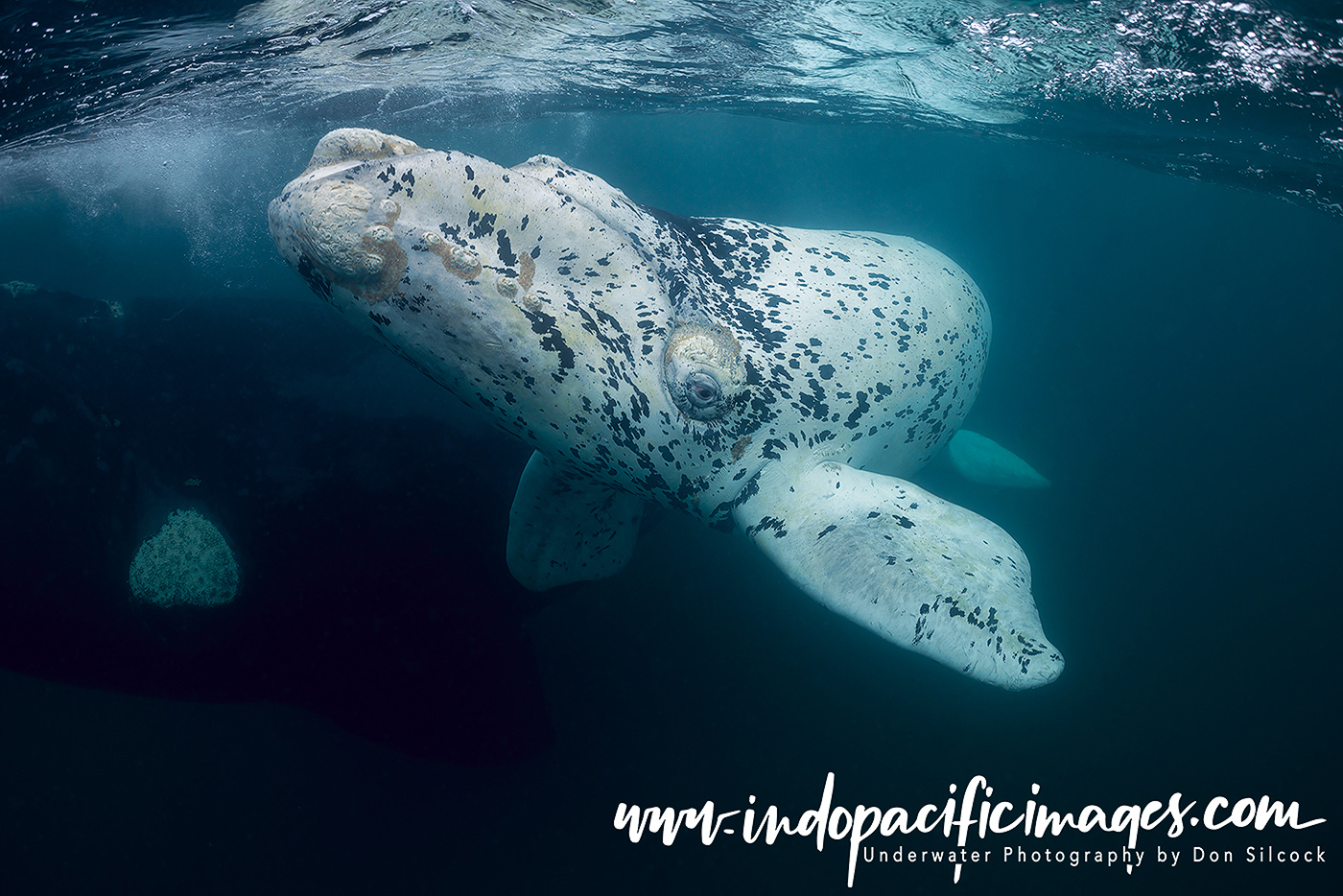
Southern Right Whales of Peninsula Valdés – The Right Whale to Kill
It is said that in the early 1700s, the hardy men of that era bestowed upon these majestic creatures their common name. But for a rather straightforward reason – they were the ‘right’ whales to kill!
Distinguished by their considerable size, relatively leisurely pace, and the rich source of whale oil they offered. These whales often swam close to the shore to protect their vulnerable calves, making them easy to spot. Their generally placid disposition and the unwavering commitment of mothers to their slower-moving offspring made them prime targets for whaleboats hastily launched from the shore.
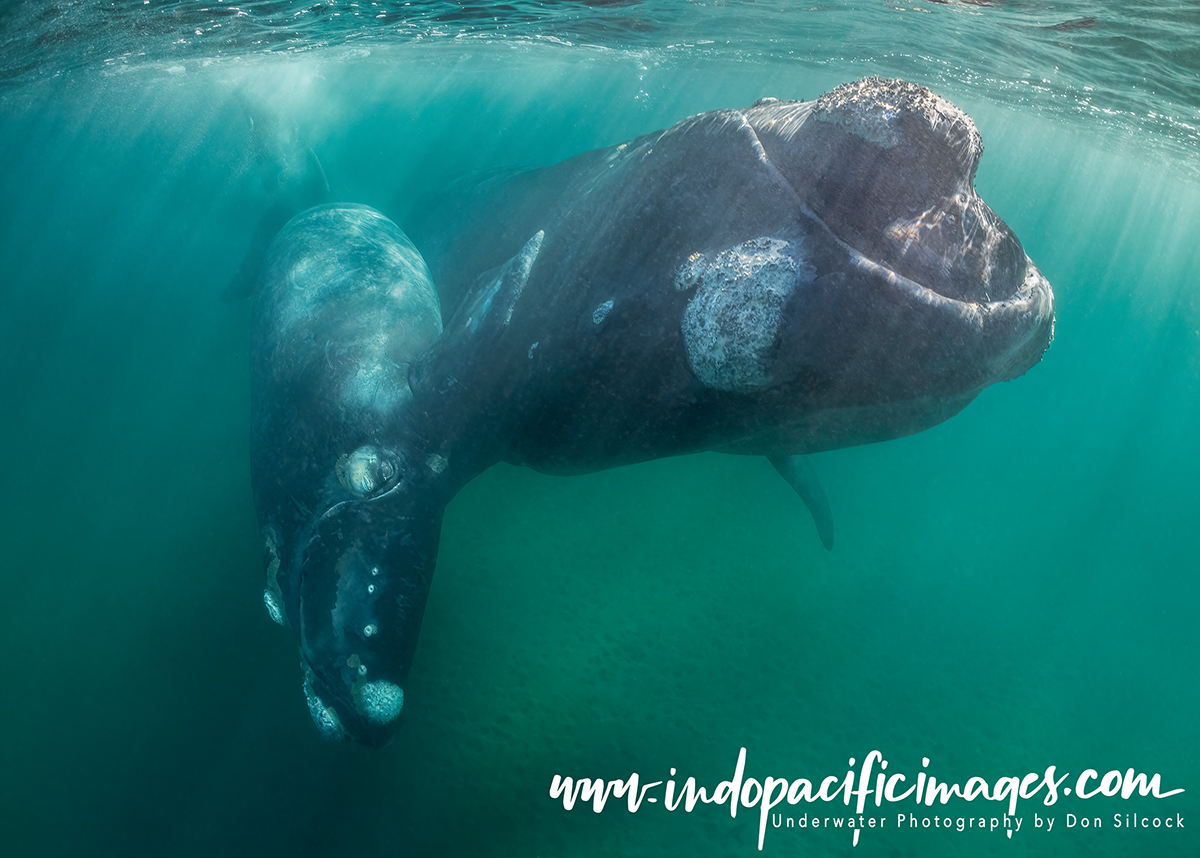
Even after being hunted and brought down, the density of their blubber ensured that their carcasses remained buoyant. Facilitating easy towing to shore for the meticulous process of flensing and extraction of highly sought-after whale oil.
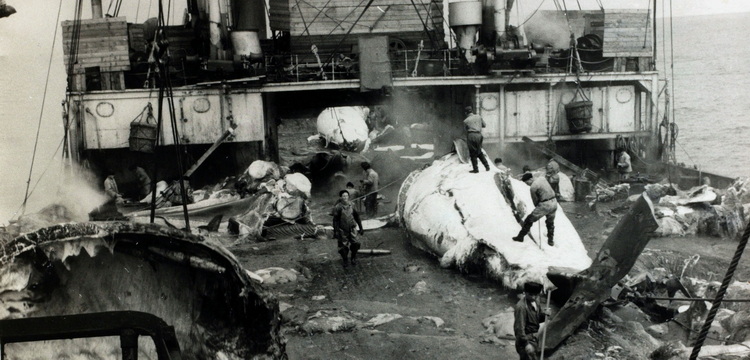 However, as the demand for this oil surged, so did the number of whalers. By the mid-1700s, the once-plentiful North Atlantic Right Whale population was in sharp decline. And shore-based whaling proved inadequate to meet the escalating demand.
However, as the demand for this oil surged, so did the number of whalers. By the mid-1700s, the once-plentiful North Atlantic Right Whale population was in sharp decline. And shore-based whaling proved inadequate to meet the escalating demand.
Enter a new era marked by technological advancements, much like today. Yankee whaling ships took center stage, evolving into self-contained factory vessels of their time. These vessels could pursue whales far out at sea and process them on board.
While the new whaling methods proved immensely profitable for their owners and investors in places like Nantucket and Long Island, the impact on the whale population was catastrophic.
So severe was the decline that Yankee whalers were compelled to venture into the waters of South America, the Indian Ocean, and as far as Australia and New Zealand in their relentless quest for new whaling grounds!
Southern Right Whales – Eubalaena australis
Much like their northern counterparts, Southern Right Whales (Eubalaena australis) were prime targets for the voracious whaling fleets. By the mid-1800s, this industry had burgeoned into a multimillion-dollar behemoth, featuring hundreds of ships, many of them powered by steam and armed with lethal gun-loaded harpoons.
Just as the northern whale populations had plummeted under this initial onslaught. So too did the southern whales’ numbers dwindle to the brink of extinction by the mid-1800s, rendering them no longer commercially viable targets.
It wasn’t until 1936 that protective measures were finally enacted. But by then, the global population of Southern Right Whales had dwindled to a mere estimate of 1,000 individuals.
Ironically, it was the post-World War II surge in the oil and fossil fuel industries that played a significant role in curbing the massacre of these majestic creatures. These industries met the escalating demand for lighting, as well as petroleum-based fuels and lubricants, helping to quell the whale killing fields.
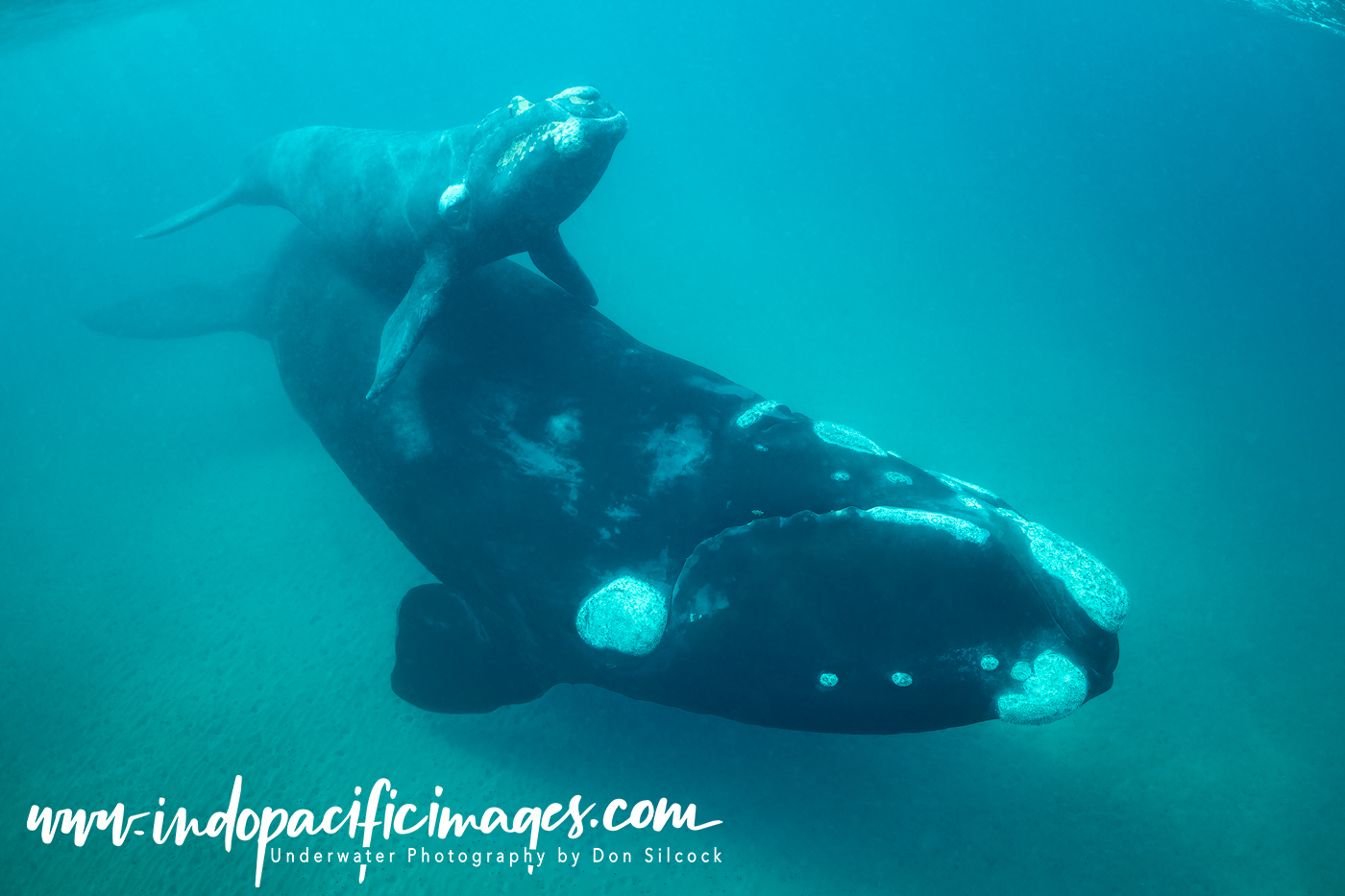
Southern Right Whales of Peninsula Valdés – The Recovery…
Nature possesses a remarkable capacity for self-restoration when we humans step aside, as evidenced by the gradual yet steady recovery of the Southern Right Whale. This resurgence has been so significant that they are now classified as ‘Least Concern’ (LC) on the IUCN Red List.
However, the Northern Right Whales have faced a far grimmer fate. The North Pacific Right Whale, with an estimated population of just 500 individuals, is currently classified as ‘Endangered.’ In the case of the North Atlantic Right Whale, the situation is even more dire, with a ‘Critically Endangered’ status and a population of around 350, including fewer than 100 breeding females.
The key distinction lies in our actions in the northern hemisphere, where we have failed to step aside. Collisions with vessels in bustling shipping lanes and entanglement in commercial fishing gear have been the leading causes of fatalities for these magnificent creatures.
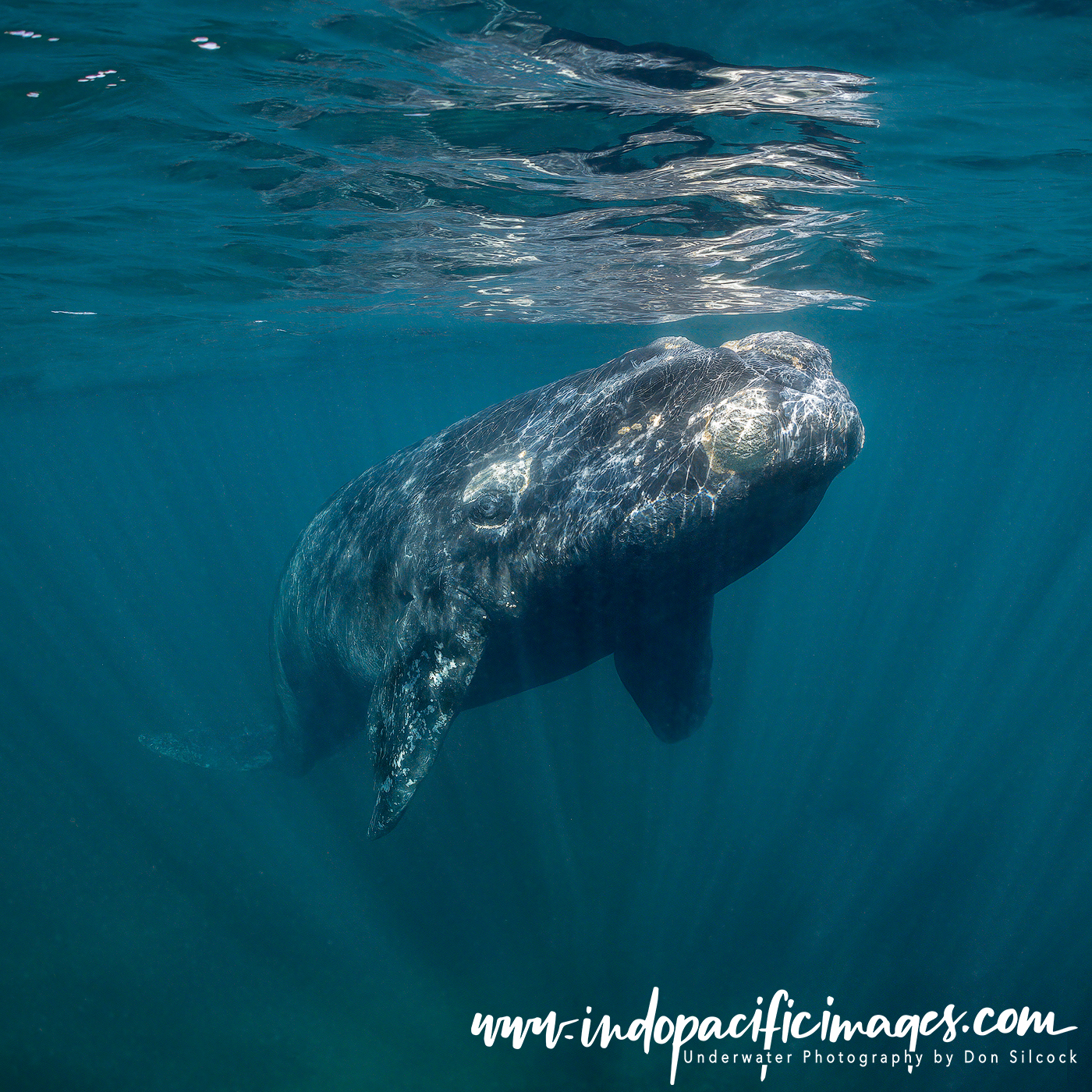
Southern Right Whales of Peninsula Valdés – Safe Havens
The age of a deceased right whale is often determined by analyzing its ear wax, revealing an average lifespan of approximately 70 years. As a species, they are known for their slow reproductive rates, with females reaching sexual maturity between 8 to 10 years of age and giving birth to a single calf after a year-long gestation period.
In the past, intervals between pregnancies were typically 3 to 5 years. However, recent research on northern right whales has unveiled a concerning trend. Females are now calving every 6 to 10 years, and there are clear indications that their lifespans have reduced to around 45 years. This decline can be attributed to the stress induced by vessel strikes and entanglement, further exacerbating their already precarious Endangered status.
Safe havens have played a pivotal role in the remarkable recovery of the Southern Right Whale. Among these sanctuaries, none have been more vital than the sheltered gulfs of Peninsula Valdés in the southern Atlantic Ocean.
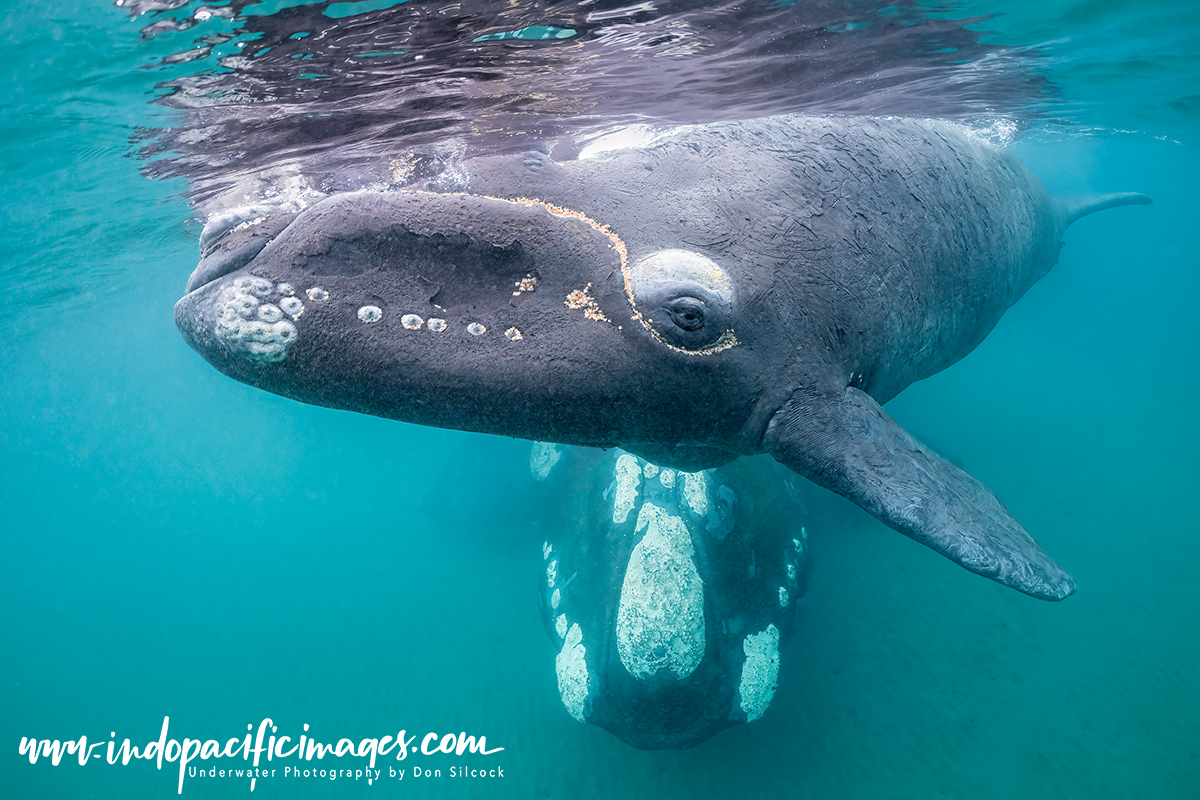
Peninsula Valdés
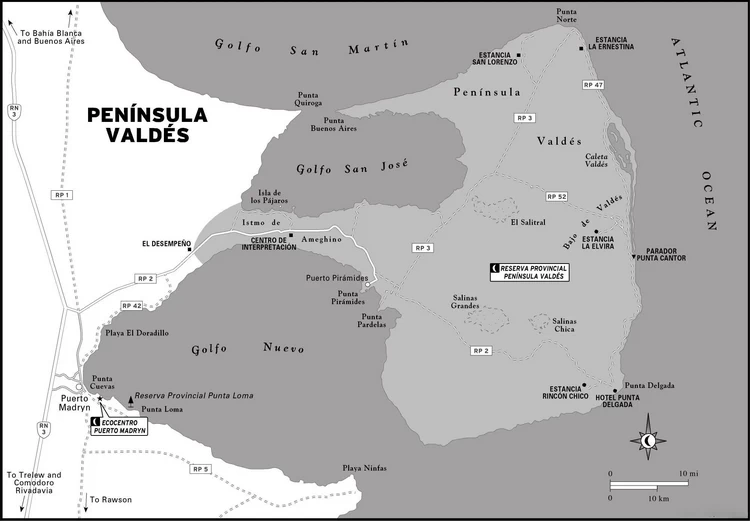 Situated in the northern region of Patagonia, Peninsula Valdés stands as one of Argentina’s most significant protected areas. Encompassing a vast expanse of approximately 360,000 hectares.
Situated in the northern region of Patagonia, Peninsula Valdés stands as one of Argentina’s most significant protected areas. Encompassing a vast expanse of approximately 360,000 hectares.
The peninsula is characterized by two expansive gulfs: the San José Gulf to the north and the Gulf Nuevo to the south. With a narrow strip of land connecting Peninsula Valdés to the mainland.
It is a region sparsely populated, boasting limited infrastructure, and virtually devoid of industrial development.
Peninsula Valdés features a dynamic landscape, including shifting coastal lagoons, extensive mudflats, sandy and pebble beaches, active sand dunes, and small islands.
This varied terrain offers critical nesting and resting sites for numerous migratory birds, along with hosting several endemic species of camelids and rodents.
Yet, what truly sets Peninsula Valdés apart is the presence of its large gulfs. Which provide a sheltered haven from the tempestuous waters of the South Atlantic. This unique environment serves as an almost perfect setting for the mating, birthing, and nurturing of the next generation of whales, effectively contributing to the preservation of the species.
With an annual visitation of more than 1,500 specimens, Peninsula Valdés holds immense significance as a vital breeding ground for the Southern Right Whale.

Peninsula Valdés – Enlightened Conservation
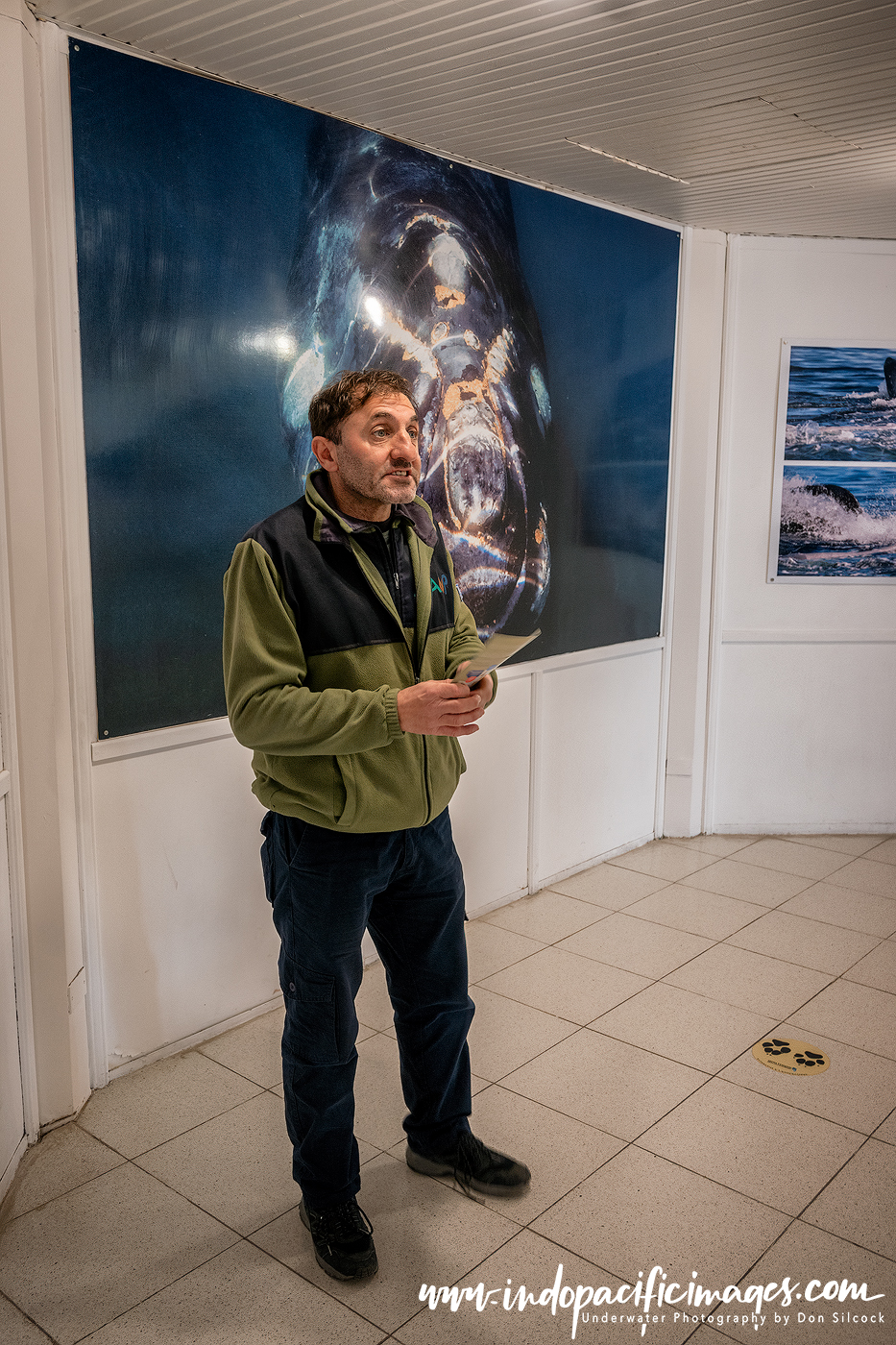
There’s much to appreciate about Peninsula Valdés, particularly in the way it is thoughtfully managed. While a single week in the area may not suffice to form a definitive opinion. It offers ample time to grasp the dynamics and determine if you’re drawn to return for more. A true litmus test for being in the right place.
The journey toward recognizing its unique status and how best to manage it commenced in the 1960s with the establishment of the first nature reserves. In 1974, San José Gulf was designated as a marine park. And this commitment deepened in 1983 with the creation of a comprehensive Nature Reserve covering the entire peninsula.
Central to this endeavor was a special emphasis on fortifying the protection of the Southern Right Whale. In 1995, these marine reserves were extended five nautical miles out to sea, creating a genuine safe haven.
Implementing enlightened conservation practices is often easier said than done, But the practical execution at Peninsula Valdés is truly commendable, with the large numbers of Southern Right Whales serving as its primary allure.
Whale watching forms the linchpin of the economy in Puerto Piramides, the quaint town serving as the peninsula’s ecotourism hub. During the season, hundreds of tourists embark daily onto Gulf Nuevo to witness the mothers and their calves.
For those seeking an even more immersive experience… It’s possible to enter the water with the whales through a special permit granted by the Argentine Ministry of Tourism and Protected Areas. All while under the vigilant supervision of designated wildlife guards – in our case, the excellent Héctor Casin.
The emphasis remains on maintaining a respectful distance from the whales. Ensuring minimal disruption to their natural behavior, and safeguarding the well-being of individuals sharing the waters with these magnificent and massive creatures.
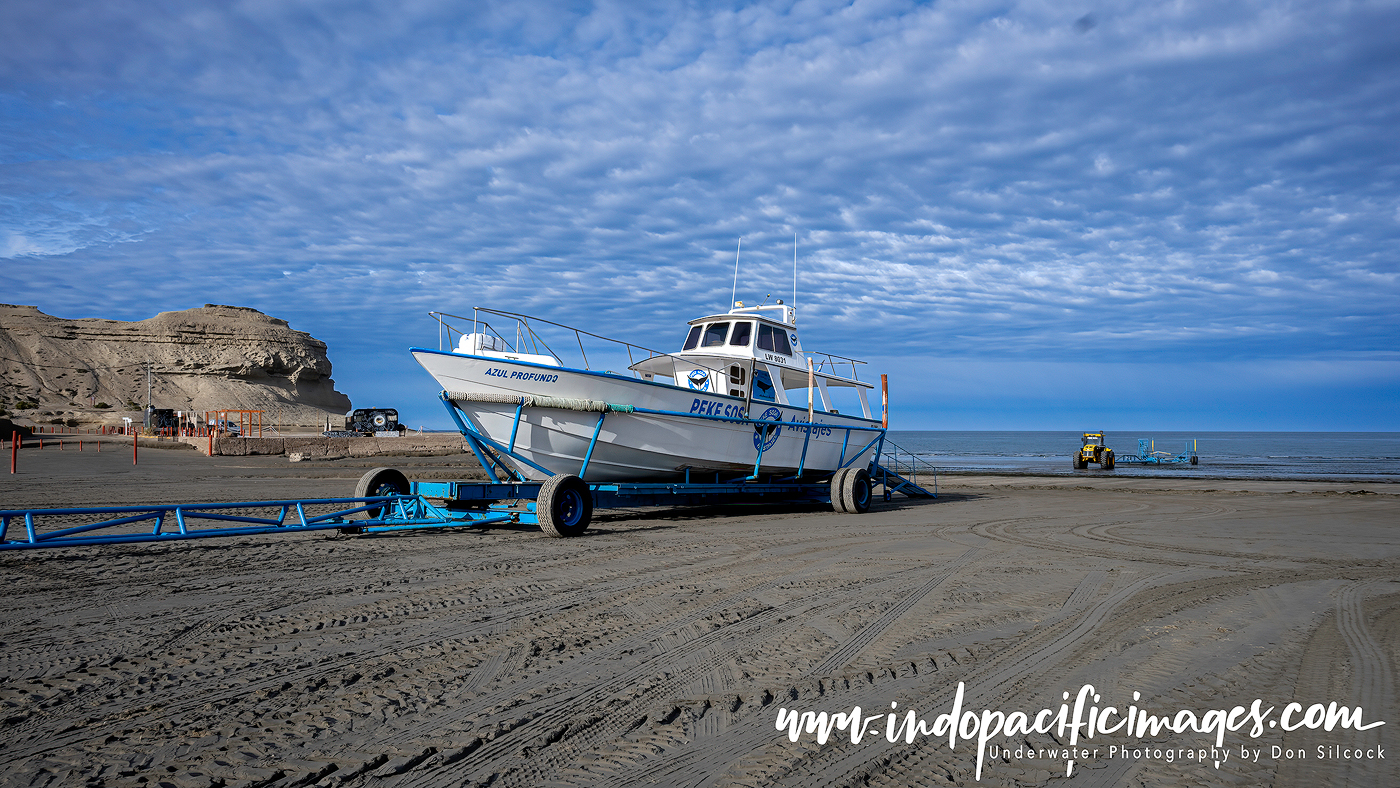
El Blanco – the White One…
Sharing the water with large creatures is an inherently special experience. And the degree of specialness often hinges on the animal’s disposition towards your presence. Some creatures may want nothing to do with you, while others seem to relish the company. In my experience, whales tend to be quite accommodating and spatially aware. They possess an uncanny sense of your location and adjust their movements accordingly. A reassuring trait considering the potential damage their massive flukes and tails could inflict!
The Southern Right Whales of Peninsula Valdés exhibited a similar demeanor, provided you approached them with care. Being in such close proximity to these unusually shaped giants had the potential to be life-changing. Over the course of five days spent in the water with them, our encounters steadily improved as we gained confidence. However, it was on the final day that everything truly fell into place.
We had a premonition that something extraordinary was on the horizon when our boat crew collectively whispered “el blanco.” This meant that the rare white calf we had briefly glimpsed earlier in the trip had returned. White calves are exceptionally rare, accounting for just 1% of each year’s newborn whales in the area. What made this encounter even more exceptional was that “el blanco” was in a curious and playful mood. Evidently taking cues from its mother that it was safe to investigate us. For stretches of up to 15 minutes, the calf engaged with us by approaching closely and then playfully veering away, akin to the spirited antics of a puppy.
We took every possible precaution to avoid physical contact. But even when the calf came so close that we could practically reach out and touch it. It seemed to possess an innate awareness of our presence, turning away at the last moment. Throughout this enchanting interaction, “el blanco” kept its tail passive, ensuring our safety at all times. While we were utterly awed and profoundly inspired by the spectacle before us, fear was conspicuously absent from the equation.
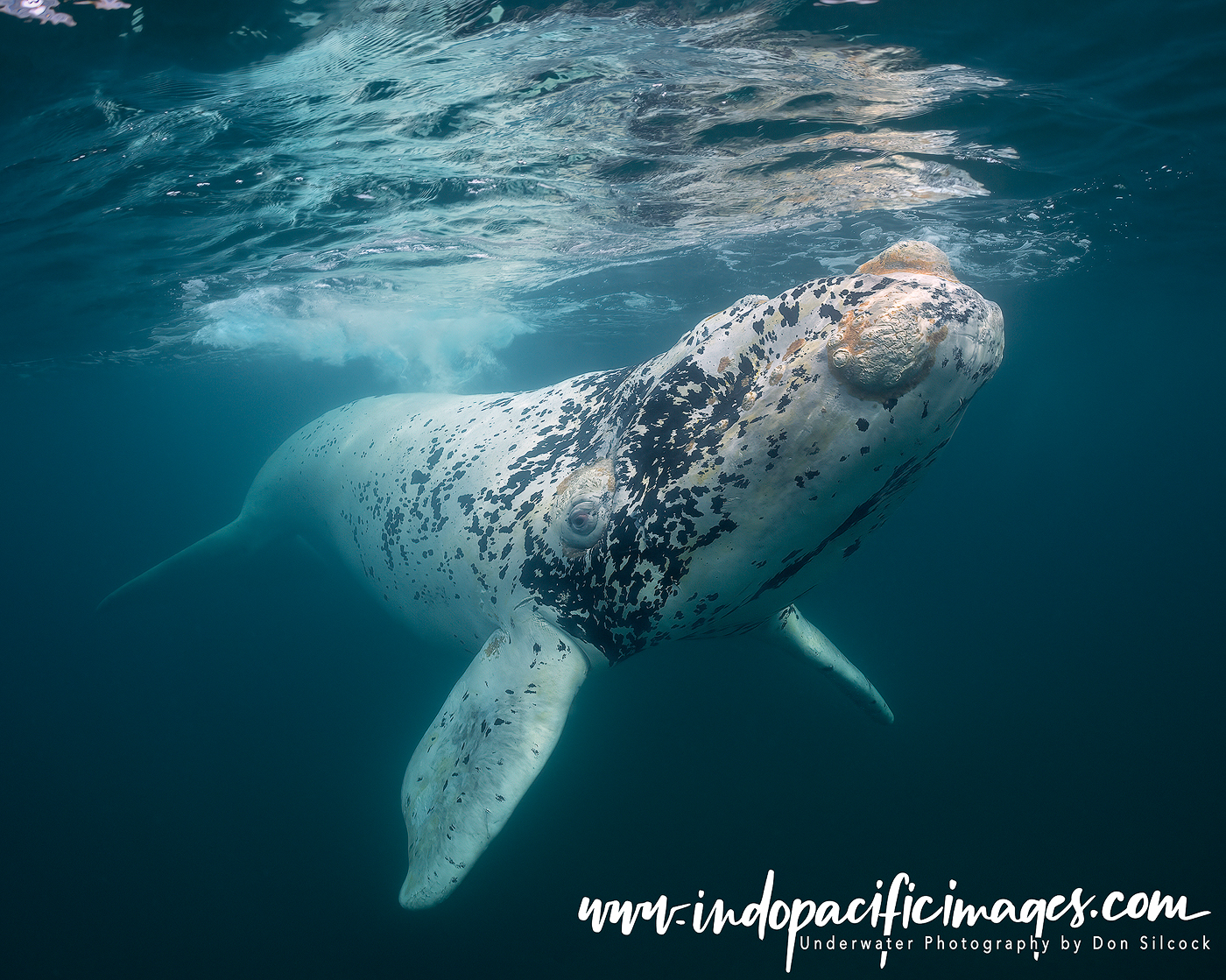
Southern Right Whales of Peninsula Valdés – In Summary
Both the Northern and Southern Right Whales teetered on the precipice of extinction. Their populations decimated by the relentless, industrial-scale pursuit of commercial whaling.
Today, the Northern variants still teeter on that precipice, their long-term prospects appearing bleak unless significant changes occur. However, the Southern whales tell a different story – a tale of resilience and remarkable recovery. While there is work yet to be done, the signs are undeniably positive.
The safe havens of Peninsula Valdés have played an instrumental role in bolstering the Southern Atlantic Ocean population. Witnessing firsthand how these whales utilize these havens was a profound privilege.
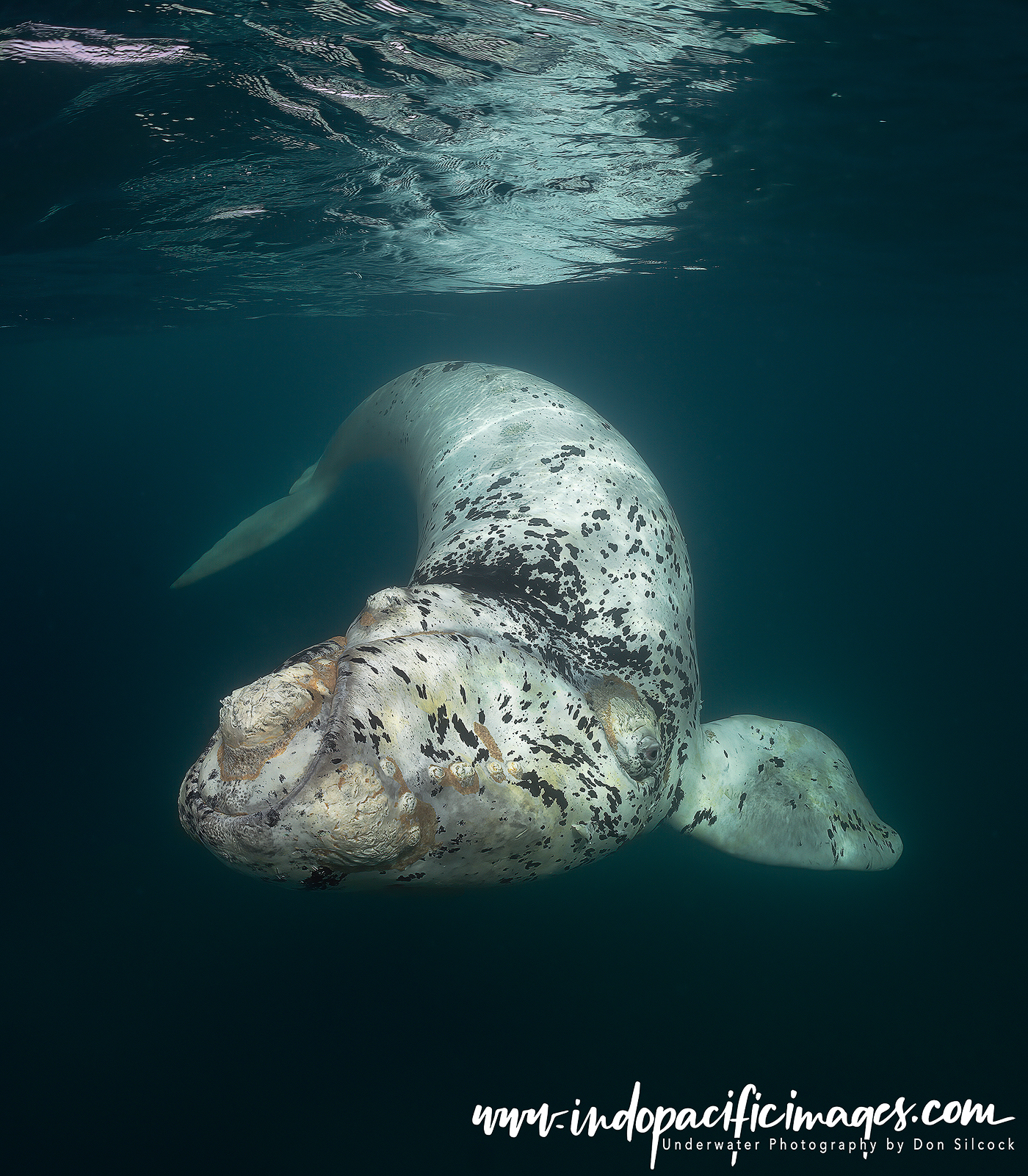
Southern Right Whales of Peninsula Valdés: X-Ray Article and Front Cover
The highly respected global diving magazine X-Ray published an eight-page article on the Southern Right Whales of Peninsula Valdés. My image of El Blanco also got the highly coveted front cover… You can use the link to download a copy of the article from the X-Ray site.
